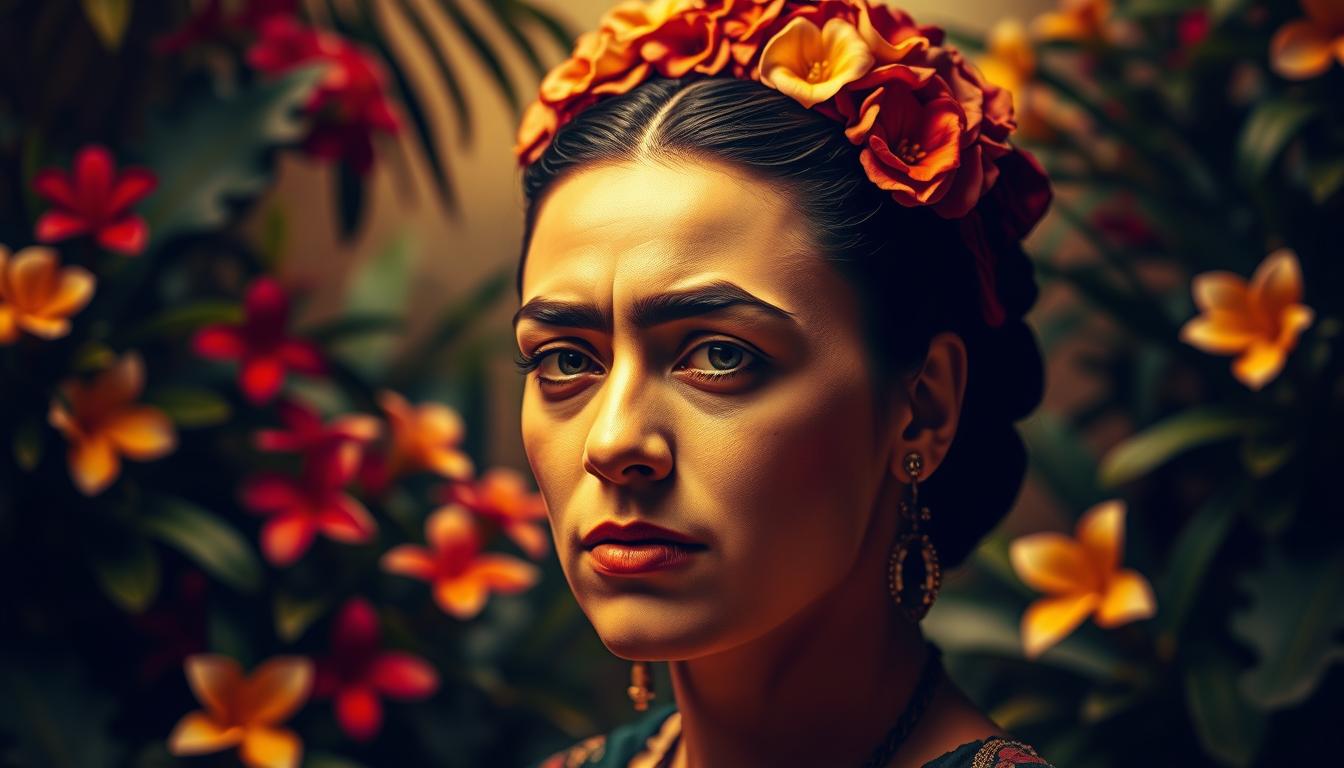Physical Address
304 North Cardinal St.
Dorchester Center, MA 02124
Physical Address
304 North Cardinal St.
Dorchester Center, MA 02124

Exploring Frida Kahlo’s art reveals her special bond with Surrealism. Though she didn’t call herself a Surrealist, leaders like André Breton saw her work as part of the movement. Breton’s support helped introduce her art to more people.
Frida Kahlo once said, “I never painted dreams, I painted my own reality.” This shows her focus on personal experiences and emotions, not dreams. The Surrealists valued her work for its emotional depth and honesty.
In 1953, Frida Kahlo had her first solo show in Mexico. It was a big deal, happening just a year before she passed away. The show showed her growing fame and the impact of her art in Mexico.
Frida Kahlo became the first Mexican artist in the Louvre’s collection. Her painting, “The Frame,” was added in 1954, a year after she died. This showed her big influence on art worldwide.
| Year | Event | Significance |
|---|---|---|
| 1938 | First solo exhibition in New York | Introduced her art to a broader audience |
| 1953 | First solo exhibition in Mexico | Marked a milestone in her career |
| 1954 | Featured in the Louvre’s collection | Cemented her global recognition |
Frida Kahlo’s link to Surrealism and her global fame have made a lasting mark on art. Her unique style and deep emotions in her paintings keep drawing in fans from all over.
Exploring Frida Kahlo’s life shows her strong ties to politics and change. She was more than an artist; she was a symbol of resistance and political change.
Frida Kahlo’s art and identity were shaped by her ties to the Mexican Communist Party. A key example is the hammer and sickle on her body cast. It showed her strong political beliefs.
Frida Kahlo’s clothes were a political statement. She wore traditional Tehuana dresses, making them a key part of her image. These dresses symbolized her Mexican heritage and resistance to cultural imperialism.
Frida Kahlo’s last painting, “Viva la Vida,” shows her political spirit. The bright colors and title celebrate life and her commitment to change.
| Symbol | Meaning | Representation in Frida’s Art |
|---|---|---|
| Hammer and Sickle | Communism and Workers’ Rights | Body Cast, Paintings |
| Tehuana Dresses | Mexican Heritage, Resistance to Imperialism | Self-Portraits, Public Appearances |
| Watermelons | Revolutionary Spirit, Celebration of Life | Final Painting, “Viva la Vida” |
Frida Kahlo’s impact goes beyond her art. It includes her political activism and revolutionary spirit. Her work and choices inspire and influence people around the world.
You’ve learned about Frida Kahlo, a 20th-century icon. Her life and art have left a lasting mark on the world. Her story shows her strength and resilience in tough times.
Frida Kahlo’s art inspires people everywhere. Her unique style mixes Mexican culture with surrealism. This has made her art famous, seen in fashion and movies.
Her legacy shows how one person can change the world. Frida’s art and spirit will keep inspiring future generations. By exploring her story, you’ll see the power of creativity and self-expression.